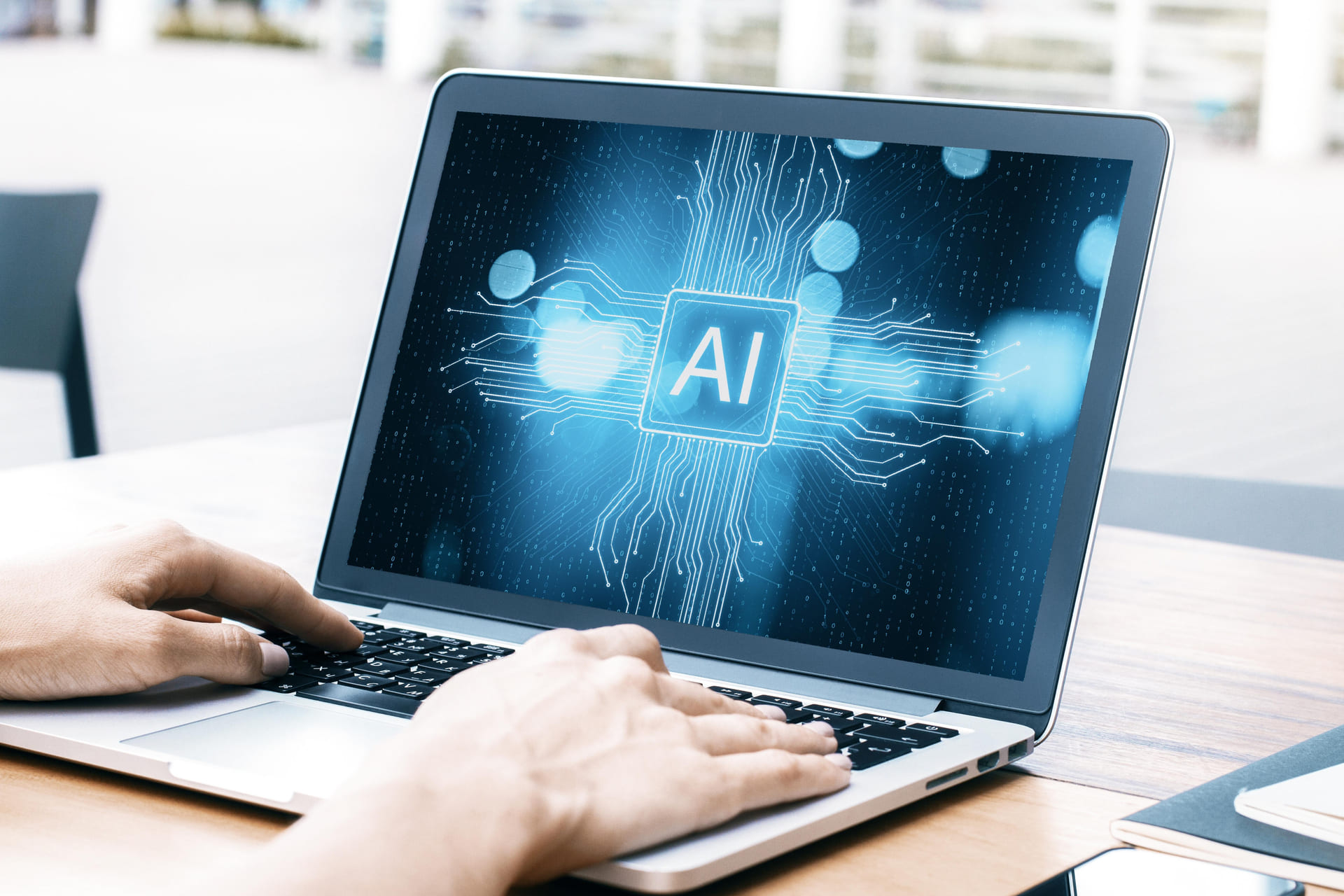Artificial intelligence in cybersecurity represents both a powerful shield and a potential weapon for modern businesses. Knowing the advantages and disadvantages of AI technology helps organizations make informed decisions about implementing these transformative security solutions effectively.
The key benefits of AI in cybersecurity include:
- Enhanced Threat Detection and Response
- Automated Security Operations
- Predictive Threat Prevention
- Reduced False Positives and Alert Fatigue
- Cost-Effective Security Scaling
However, AI security also introduces new challenges and risks:
- AI-Powered Cyberattacks and Adversarial Threats
- Data Privacy and Compliance Concerns
- Over-Reliance on AI and Human Oversight Gaps
- Implementation Costs and Resource Requirements
- AI Bias and False Decision-Making
Many business leaders feel overwhelmed by the rapidly evolving landscape of AI threats and opportunities. Without proper guidance, organizations risk falling behind competitors who leverage AI effectively, leaving their sensitive information vulnerable to increasingly sophisticated cyber threats.
The consequences of inadequate AI adoption in cybersecurity can include devastating data breaches, regulatory violations, and irreparable damage to customer trust.
Our comprehensive cybersecurity solutions help businesses manage AI implementation safely while maximizing protection against evolving threats.
Benefits of AI in Cyber Security: Transforming Business Protection
Organizations across industries are discovering how AI brings revolutionary capabilities to their security operations. These advantages enable businesses to defend against threats more effectively while optimizing resource allocation and operational efficiency.
1. Enhanced Threat Detection and Response
Modern AI technology excels at identifying patterns and anomalies that human analysts might miss. Machine learning models can analyze historical data from network traffic, user behavior, and system logs to detect potential vulnerabilities in real-time. This capability proves especially valuable for small businesses that lack extensive security teams.
💡 Consider our manufacturing company that deploys AI-driven monitoring systems. The AI system flags unusual network activity at 2 AM when no employees should be accessing sensitive production data. Traditional security tools might miss this subtle anomaly, but AI algorithms immediately recognize the deviation from normal patterns and trigger automated containment protocols.
The Cybersecurity and Infrastructure Security Agency (CISA) emphasizes that organizations implementing advanced threat detection capabilities can significantly improve their incident response effectiveness. This improvement helps businesses minimize damage from security incidents while maintaining operational continuity.
2. Automated Security Operations
AI can automate numerous routine security tasks that traditionally consume valuable IT resources. These automation capabilities allow security teams to focus on strategic initiatives rather than repetitive monitoring activities.
Key automated security functions include:
- Continuous network monitoring and analysis
- Patch management and vulnerability scanning
- Log analysis and correlation across multiple systems
- Incident classification and initial response procedures
- Security policy enforcement and compliance monitoring
CMIT Solutions helps businesses implement automated security workflows that reduce manual oversight requirements while improving overall protection effectiveness through our 25+ years of cybersecurity expertise.
| Manual Security Tasks | AI-Automated Alternatives |
|---|---|
| Extensive weekly log review | Real-time automated analysis |
| Manual patch deployment | Automated testing and installation |
| Reactive threat hunting | Proactive anomaly detection |
| Time-consuming incident triage | Instant priority classification |
| Periodic vulnerability scans | Continuous security assessment |
3. Predictive Threat Prevention
The use of AI in cybersecurity enables organizations to shift from reactive to proactive security strategies. AI models analyze historical patterns to predict potential attack vectors before malicious actors can exploit them. This predictive capability proves particularly valuable for small businesses that cannot afford extensive security breaches.
Predictive AI helps organizations identify emerging threats by examining global threat intelligence feeds, analyzing attack trends, and correlating indicators across multiple data sources. Machine learning algorithms continuously refine their accuracy, becoming more effective at preventing zero-day exploits and advanced persistent threats.
Small businesses benefit significantly from predictive analytics because these systems can anticipate threats specific to their industry, size, and technology stack. For example, retail businesses might receive early warnings about point-of-sale malware campaigns, while professional services firms get alerts about targeted phishing campaigns.
4. Reduced False Positives and Alert Fatigue
Traditional security systems often overwhelm IT teams with excessive alerts, many of which prove to be false alarms. Ai technology significantly reduces this burden by improving the accuracy of threat identification and minimizing unnecessary notifications.
Advanced AI algorithms use contextual analysis to distinguish between legitimate anomalies and actual security threats. This capability helps organizations prioritize genuine risks while reducing the time spent investigating benign activities. Small IT teams particularly benefit from this efficiency improvement.
5. Cost-Effective Security Scaling
Implementing AI-driven security solutions enables businesses to enhance their protection capabilities without proportionally increasing staffing costs. This scalability proves especially valuable for growing organizations that need to secure expanding digital infrastructure.
AI helps streamline security operations by automating tasks that would otherwise require additional personnel. Organizations can maintain comprehensive security coverage while optimizing their technology budgets and resource allocation.
| Business Size | Traditional Security Investment | AI-Enhanced Security Investment |
|---|---|---|
| 10-50 employees | $12,000-25,000 annually | $8,000-15,000 annually |
| 51-100 employees | $25,000-45,000 annually | $15,000-30,000 annually |
| 101-250 employees | $45,000-85,000 annually | $30,000-55,000 annually |
Note: The above figures are illustrative estimates only, rather than actual figures, but they give you an idea of how AI can help with long-term savings.
Organizations typically see a positive return on investment from AI adoption in cybersecurity within the first 18-24 months of implementation, making it an attractive option for cost-conscious businesses.
AI Security Risks in Cybersecurity: What Business Leaders Must Know
While AI offers tremendous advantages, incorporating AI into security operations also introduces new vulnerabilities and challenges. Knowing these potential risks helps organizations develop comprehensive strategies that maximize benefits while mitigating dangers.
1. AI-Powered Cyberattacks and Adversarial Threats
Malicious actors increasingly use AI to enhance their attack capabilities, creating more sophisticated and harder to detect threats. These AI-powered attacks can adapt in real-time, evade traditional security measures, and operate at unprecedented scale and speed.
Generative AI tools enable cybercriminals to create convincing phishing emails, deepfake videos for social engineering attacks, and polymorphic malware that constantly changes its signature. The Federal Bureau of Investigation (FBI) warns that AI-enhanced attacks represent a growing threat to businesses of all sizes, particularly those with limited cybersecurity resources.
Hypothetical Scenario: Cybercriminals use AI to generate personalized phishing emails targeting a law firm’s clients. The AI system analyzes public social media posts, professional directories, and news articles to craft highly convincing messages that appear to originate from trusted partners. These attacks are significantly more effective than traditional mass phishing campaigns.
The sophistication of AI-driven attacks means that organizations must evolve their defensive strategies continuously. Traditional firewall and antivirus solutions often prove inadequate against these adaptive threats.
2. Data Privacy and Compliance Concerns
AI systems require vast amounts of data to function effectively, creating potential conflicts with data protection laws and privacy regulations. Organizations must carefully balance AI capabilities with compliance requirements across multiple jurisdictions.
Key compliance considerations include:
- GDPR requirements for data processing transparency and consent
- HIPAA regulations for healthcare information protection
- SOX compliance for financial data handling
- State privacy laws like the California Consumer Privacy Act
- Industry-specific regulations for legal, financial, and healthcare sectors
Healthcare organizations face particular challenges when implementing AI security tools, as these systems must protect patient information while maintaining HIPAA compliance throughout all automated processes.
Different industries face varying compliance requirements that affect how they can deploy AI technologies. Legal firms must ensure client privilege protection, while financial institutions must maintain strict audit trails for all AI-driven security decisions.
3. Over-Reliance on AI and Human Oversight Gaps
The convenience and efficiency of AI systems can lead organizations to reduce human oversight, potentially creating dangerous blind spots in their security operations. AI without proper human supervision may miss contextual clues or make decisions that conflict with business objectives.
Security teams must maintain active involvement in AI-driven processes to ensure appropriate responses to complex threats. Human expertise remains essential for interpreting AI recommendations, making strategic decisions, and handling edge cases that fall outside algorithmic parameters.
Effective AI integration requires establishing clear protocols for human intervention, regular system audits, and continuous training for security personnel. Organizations that implement AI as a complete replacement for human judgment often experience decreased security effectiveness and increased vulnerability to sophisticated attacks.
4. Implementation Costs and Resource Requirements
Deploying AI security solutions requires significant upfront investment in technology, training, and infrastructure. Many small businesses underestimate the total cost of ownership for these systems, leading to budget overruns and incomplete implementations.
Implementation costs vary significantly based on organization size and complexity requirements. However, ongoing expenses for maintenance, updates, and staff training represent substantial ongoing commitments that organizations must consider.
| Implementation Phase | Small Business (10-50) | Medium Business (51-250) |
|---|---|---|
| Initial setup and licensing | $20,000-40,000 | $50,000-100,000 |
| Staff training and certification | $5,000-12,000 | $12,000-30,000 |
| Infrastructure upgrades | $8,000-20,000 | $20,000-50,000 |
| Annual maintenance and support | $6,000-15,000 | $15,000-40,000 |
Organizations must also consider the opportunity costs of staff time during implementation and the potential productivity impacts during transition periods.
5. AI Bias and False Decision-Making
AI algorithms can develop biases based on their training data, leading to inaccurate threat assessments and inappropriate security responses. These biases may cause systems to misclassify legitimate business activities as threats or fail to detect genuine security incidents.
Hypothetical Scenario: An AI system learns to associate certain geographic locations or user patterns with suspicious activity based on historically biased data. As a result, legitimate international business communications are flagged as potential threats, disrupting normal operations and creating unnecessary friction for employees and customers.
Machine learning models require diverse, representative training data to function effectively. Organizations must regularly audit their ai systems for bias, test decision-making accuracy, and implement correction mechanisms when problems arise. The challenge of ensuring fair and accurate AI behavior requires ongoing attention and resources.
Ready to secure your business with AI-driven protection? Contact us to explore tailored cybersecurity solutions that balance cutting-edge technology with human oversight, keeping your organization safe, compliant, and future-ready.
Alternatively, fill in the form below to download our cybersecurity and the trusted advisor e-book!
AI in Cybersecurity: The Foundation Every Business Needs
Getting to know AI in cybersecurity begins with recognizing how artificial intelligence and machine learning transform traditional security approaches. Unlike conventional security tools that rely on predefined rules and signatures, AI systems learn from experience and adapt to new threats dynamically.
Machine learning, a subset of artificial intelligence, enables security systems to identify patterns in massive datasets that would overwhelm human analysts. These patterns help predict, detect, and respond to cyber threats with unprecedented speed and accuracy. For small businesses, this capability levels the playing field against well-resourced cybercriminal organizations.
💡 Adopting AI-driven cybersecurity gives small businesses adaptive protection once only available to large enterprises. Unlike static security tools, AI systems evolve in real time, constantly learning from new data to counter emerging threats.
The fundamental difference between traditional security tools and AI-driven solutions lies in their ability to evolve. Conventional systems require manual updates to recognize new threats, while AI models continuously learn from new data and automatically improve their detection capabilities.
This self-improving characteristic makes AI technology particularly valuable in today’s rapidly changing threat environment.
Small and medium-sized businesses increasingly recognize that AI adoption provides access to enterprise-level security capabilities without requiring extensive in-house expertise. Organizations implementing AI-enhanced cybersecurity solutions typically experience improved threat detection accuracy and reduced security management overhead.
Industry-Specific AI Cybersecurity Applications
Different industries face unique security challenges that AI technology addresses through specialized applications and compliance-focused solutions.
- Healthcare organizations leverage AI to protect electronic health records while maintaining HIPAA compliance through automated data classification and access monitoring systems that integrate with existing medical information systems
- Financial institutions use AI to detect fraudulent transactions in real-time while ensuring SOX compliance through comprehensive audit trail generation and analysis capabilities
- Manufacturing companies implement AI-driven operational technology security to protect industrial control systems from nation-state attacks and industrial espionage targeting intellectual property
- Legal firms deploy AI to safeguard client-privileged communications and maintain attorney-client confidentiality through advanced encryption and access control mechanisms
- Retail businesses utilize AI for payment card industry compliance while protecting customer data from point-of-sale attacks and e-commerce fraud
The Department of Homeland Security emphasizes that industry-specific implementations require careful consideration of sector-specific threats and regulatory requirements. Each industry benefits from AI tools tailored to their particular operational constraints and compliance obligations.
Educational institutions also increasingly rely on ai to protect student records and research data while complying with FERPA regulations. These organizations face unique challenges from both external attackers and insider threats that AI systems help identify and mitigate.
Balancing the Benefits and Risks of AI: A Strategic Framework
Successful AI integration requires a comprehensive approach that maximizes benefits while addressing inherent challenges related to implementation and ongoing management. Organizations must develop structured methodologies for evaluating, implementing, and maintaining AI-driven security solutions.
✔️ Essential elements for successful AI integration include comprehensive risk assessment, stakeholder training, gradual implementation phases, and regular system audits to ensure optimal performance and security.
Effective risk management requires identifying potential failure points, establishing contingency procedures, and maintaining human oversight capabilities. Organizations should develop detailed incident response plans that account for both AI system failures and attacks specifically targeting AI components.
| Risk Level | Mitigation Strategy | Implementation Priority |
|---|---|---|
| High | Mandatory human oversight for critical decisions | Immediate |
| Medium | Regular algorithm auditing and bias testing | Within 30 days |
| Low | Automated monitoring with periodic review | Within 90 days |
The framework should also address data governance, ensuring that AI systems use appropriate, representative datasets while maintaining privacy and compliance requirements across all applicable regulations.
Getting Started: AI Cybersecurity Implementation Roadmap
Organizations planning to integrate AI into their cybersecurity operations should follow a structured approach that ensures successful deployment while minimizing disruption to existing operations.
- Assessment and Planning Phase begins with a comprehensive evaluation of the current security posture, identification of specific use cases where AI can provide immediate value, and development of implementation timelines aligned with business objectives and available resources
- Infrastructure Preparation involves upgrading network capabilities, ensuring adequate computational resources, and establishing data management protocols necessary to support AI system requirements effectively without disrupting existing operations
- Pilot Program Implementation starts with limited deployment in non-critical areas, allowing organizations to test ai capabilities while building internal expertise and identifying potential integration challenges before full-scale deployment across all systems
- Staff Training and Development ensures that security teams understand AI system capabilities, limitations, and proper operational procedures while developing skills necessary for effective human-AI collaboration and ongoing system management
- Full Deployment and Optimization expands AI implementation across all applicable security functions while establishing monitoring protocols and continuous improvement processes for long-term success and maximum security effectiveness
Organizations should allocate 6-12 months for complete implementation, with pilot programs running for at least 60 days to ensure proper system validation and staff adaptation.
| Implementation Milestone | Timeline | Key Deliverables |
|---|---|---|
| Initial assessment complete | Month 1 | Risk analysis and use case identification |
| Infrastructure preparation | Month 2-3 | Hardware/software upgrades and integration |
| Pilot program launch | Month 4 | Limited AI deployment and testing |
| Staff training completion | Month 5-6 | Certification and competency validation |
| Full deployment | Months 7-9 | Complete system integration and optimization |
| Performance optimization | Months 10-12 | Fine-tuning and continuous improvement |
Future Outlook: What’s Next for AI in Cybersecurity
The evolution of AI technology continues accelerating, bringing new capabilities and challenges that will reshape cybersecurity practices over the next decade. Organizations must prepare for these changes by getting to know emerging trends and developing adaptive strategies.
Autonomous security systems represent the next major advancement, where AI agents will handle complete incident response workflows with minimal human intervention. These systems will coordinate across multiple security tools, automatically contain threats, and implement remediation measures while keeping human operators informed of their actions.
Quantum computing integration with AI will revolutionize both offensive and defensive capabilities. While quantum-enhanced AI will enable more sophisticated AI threat detection and analysis, it will also empower attackers with unprecedented computational capabilities for breaking traditional encryption methods.
The democratization of AI tools means that both defenders and attackers will have access to increasingly powerful capabilities. Small businesses will benefit from enterprise-grade AI security tools becoming more affordable and accessible, while cybercriminals will leverage similar technologies for more effective attacks.
Regulatory frameworks will evolve to address AI-specific security requirements, creating new compliance obligations while providing clearer guidance for responsible AI deployment. Organizations must stay informed about these regulatory changes to maintain compliance while maximizing AI benefits.
Making the Right Choice With CMIT Solutions
📌 Implementing effective AI cybersecurity requires expert guidance to manage complex technical and strategic decisions. The right approach ensures maximum protection while optimizing costs and minimizing operational disruption for your organization.
CMIT Solutions brings over 25 years of cybersecurity expertise to help businesses successfully integrate AI technology into their security operations. Our team understands the unique challenges facing small and medium-sized businesses and provides tailored solutions that deliver enterprise-level protection within realistic budgets.
Our comprehensive approach begins with a thorough assessment of your current security posture, identifying specific vulnerabilities and opportunities where AI can provide immediate value. We then develop customized implementation strategies that align with your business objectives, compliance requirements, and operational constraints.
The process includes staff training, ongoing support, and continuous optimization to ensure that your AI-enhanced security systems evolve with changing threats and business requirements. Our managed services approach means you gain access to cutting-edge AI capabilities without needing to hire specialized expertise internally.
Organizations that partner with CMIT Solutions typically achieve significant improvement in threat detection accuracy while reducing security management overhead. These improvements translate directly into better protection for your critical business assets and more efficient use of your technology investments. The question will cybersecurity be replaced by AI becomes irrelevant when you have expert guidance ensuring optimal human-AI collaboration.
To discuss how AI-enhanced security solutions can protect your business while optimizing your technology investments, contact us today or call (800) 399-2648 to speak with our cybersecurity experts.
FAQs
How long does it take to see results after implementing AI cybersecurity solutions?
Most organizations begin seeing initial improvements in threat detection within 2-4 weeks of deployment. However, optimal AI performance typically requires 3-6 months as machine learning models adapt to your specific environment and security teams become proficient with new tools and processes.
What happens if our AI security system makes a mistake and blocks legitimate business operations?
Modern AI systems include override capabilities and appeal processes that allow immediate restoration of blocked activities. Essential to ensure proper implementation includes establishing clear escalation procedures, maintaining human oversight for critical decisions, and configuring systems with appropriate sensitivity levels for your business operations.
Do we need to hire specialized AI experts to manage these cybersecurity tools?
While AI expertise proves helpful, most businesses can successfully operate AI-enhanced security through managed service partnerships. CMIT Solutions provides comprehensive support that eliminates the need for internal AI specialists while ensuring optimal system performance and security effectiveness.
Can AI cybersecurity solutions work with our existing security infrastructure?
Yes, modern AI security platforms are designed to integrate seamlessly with existing security tools, including firewalls, antivirus software, and security information and event management systems. Proper integration actually enhances the effectiveness of traditional security measures while providing additional capabilities.
What should we do if our competitors are using AI for cyberattacks against our business?
Proactive AI-enhanced defense provides the best protection against AI-powered attacks. Organizations using advanced AI security tools are significantly better equipped to detect and respond to sophisticated threats, regardless of whether attackers use AI technology themselves.






